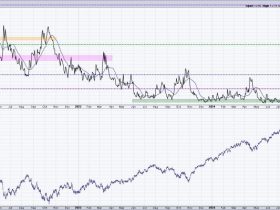Predicting Stock Market Success Using the Yield Curve: Debunking Common Myths
The yield curve is a powerful financial indicator that has long been used by analysts and investors to predict economic trends, particularly in relation to the stock market. However, there are several myths and misconceptions surrounding the yield curve and its ability to forecast stock market success. In this article, we will delve into these common myths and shed light on the realities of using the yield curve as a predictive tool.
Myth 1: Inverted Yield Curve Always Signals a Stock Market Crash
One of the biggest misconceptions about the yield curve is that an inverted yield curve always precedes a stock market crash. While it is true that an inverted yield curve has historically been a reliable recession indicator, the timing and severity of market downturns are not always directly correlated with the inversion of the yield curve. In fact, there have been instances where the yield curve inverted without leading to a significant stock market decline.
It is important to note that the yield curve is just one of many indicators that investors should consider when making investment decisions. Other factors, such as corporate earnings, geopolitical events, and market sentiment, can all influence stock market performance and may override the signals provided by the yield curve.
Myth 2: Yield Curve Predictions Are Always Accurate
Another common myth surrounding the yield curve is that its predictions are infallible. While the yield curve can be a valuable tool for assessing economic conditions and identifying potential risks to the market, it is not a foolproof indicator of future stock market performance. The economy is influenced by a multitude of complex factors, many of which are impossible to predict with certainty.
Moreover, the relationship between the yield curve and the stock market is not static and can vary depending on the broader economic environment. Changes in monetary policy, inflation rates, and global economic conditions can all impact the predictive power of the yield curve, making it essential for investors to exercise caution when relying solely on this indicator to make investment decisions.
Myth 3: Yield Curve Inversions Always Lead to Prolonged Recessions
While it is true that yield curve inversions have historically been associated with economic recessions, the duration and severity of these downturns can vary significantly. Not all inversions lead to prolonged recessions, and some economic contractions have occurred without a preceding yield curve inversion.
It is essential for investors to consider a range of economic indicators and market fundamentals when evaluating the potential impact of a yield curve inversion on stock market performance. Blindly assuming that an inversion will inevitably result in a prolonged recession can lead to misguided investment decisions and missed opportunities in the market.
In conclusion, while the yield curve can be a valuable tool for assessing economic conditions and identifying potential risks to the stock market, it is not a crystal ball that can predict market success with absolute certainty. Investors should approach yield curve analysis with caution, considering a range of indicators and economic factors to make well-informed investment decisions. By debunking common myths and understanding the limitations of the yield curve as a predictive tool, investors can navigate the complexities of the stock market with greater confidence and insight.










